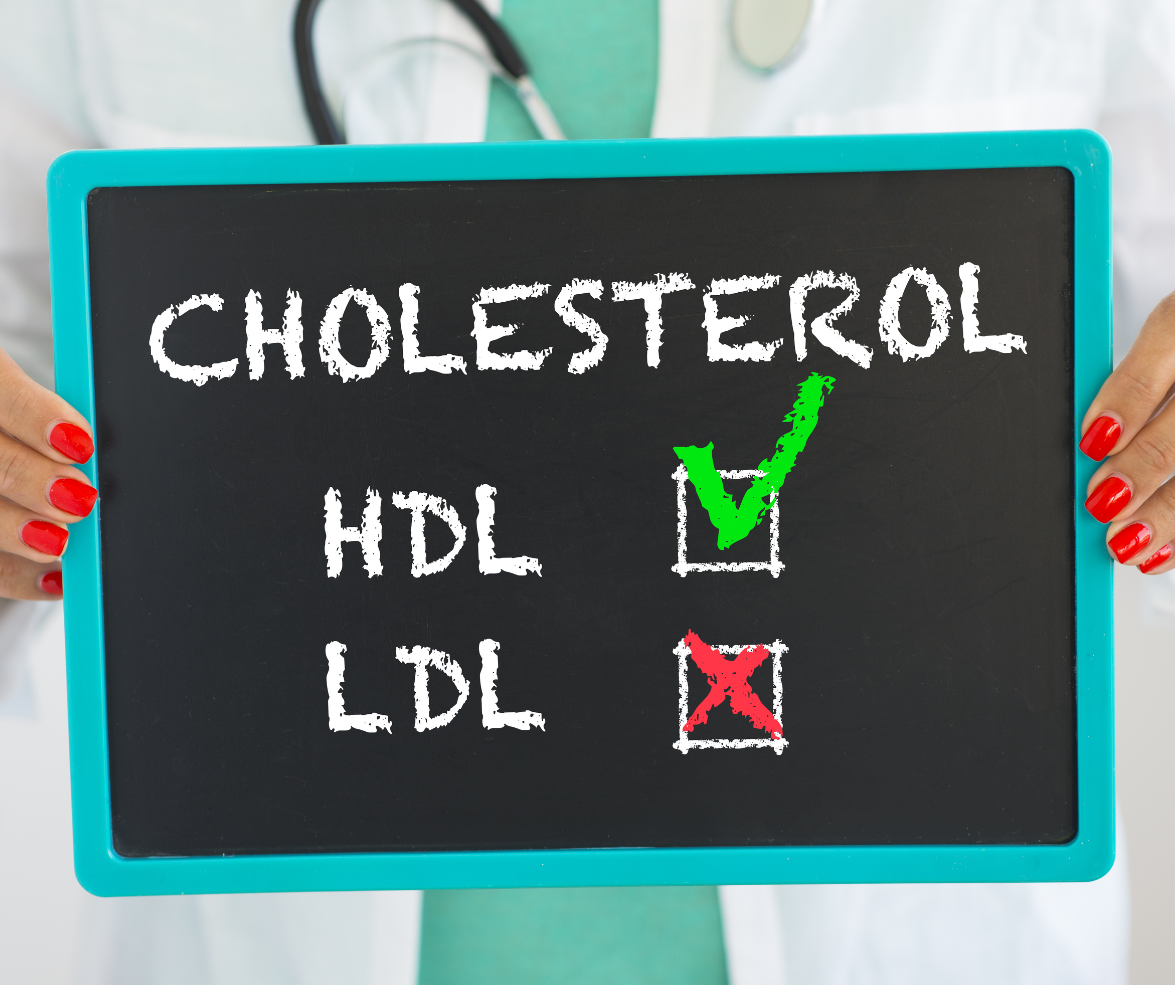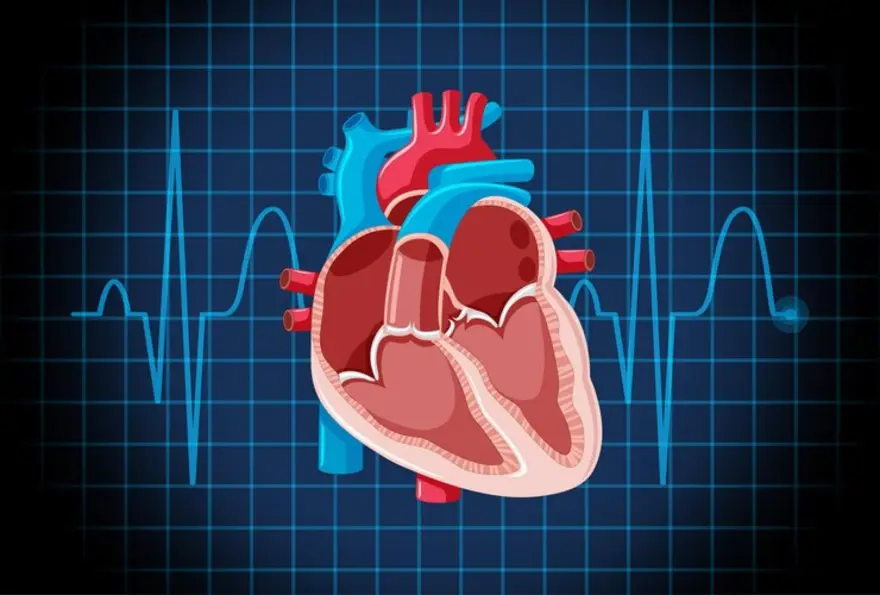LDL
What is LDL Cholesterol: Levels and How to Lower It
Are you worried about your cholesterol levels? If so, you're not alone. High cholesterol is a common health concern for many people, and LDL cholesterol is often the main culprit. LDL cholesterol, or "bad" cholesterol, can increase your risk of heart disease and stroke if left unchecked. There are plenty of things you can do to lower your LDL cholesterol levels naturally. In this blog post, we'll give you an overview of what LDL cholesterol is, the risks associated with high levels of it in your body, and some tips on how to reduce it through simple lifestyle changes and dietary adjustments. What is LDL cholesterol? LDL cholesterol, also known as low-density lipoprotein cholesterol, is a type of cholesterol that can build up in the walls of arteries and contribute to heart disease. The liver produces cholesterol, which is a waxy substance that is present in some foods. LDL cholesterol travels through the bloodstream attached to proteins called lipoproteins. When there's too much LDL in your blood, it can start to accumulate on artery walls, forming plaques that narrow the arteries and reduce blood flow to vital organs like your heart and brain. This buildup of plaque can increase your risk of serious health problems such as a heart attack or stroke. That's why it's important to keep track of your LDL levels and take steps to lower them if they're too high. What are the risks associated with LDL cholesterol? When LDL levels are high, it increases the likelihood that cholesterol will stick to arterial walls, leading to atherosclerosis (hardening and narrowing), which restricts blood flow. The higher your level of LDL in your bloodstream, the greater your chance of developing cardiovascular disease. High levels of LDL may lead to conditions such as angina (chest pain), peripheral artery disease (PAD), or even sudden cardiac arrest due to coronary heart disease. Research suggests that individuals with diabetes have an increased risk of cardiovascular disease when their bad cholesterol levels are elevated. Fortunately, by making lifestyle changes such as exercising regularly, eating healthy foods rich in fibre, and avoiding unhealthy habits like smoking or excessive drinking, one can lower the risks associated with high LDL cholesterol. How can you lower your LDL cholesterol levels? Lowering your LDL cholesterol levels is essential to maintaining good heart health and preventing cardiovascular diseases. There are several ways you can lower your LDL cholesterol levels naturally without medication. Firstly, maintaining a healthy weight through regular exercise and a balanced diet can help reduce the amount of LDL cholesterol in your body. You should aim for at least 30 minutes of physical activity each day. Secondly, eating foods that are high in fibre, such as fruits, vegetables, whole grains, oats, and legumes, can also help lower LDL cholesterol levels. Foods containing omega-3 fatty acids, such as salmon and walnuts, can also be beneficial. Additionally, limiting saturated fats found in animal products like meat and dairy while reducing trans fats, which are commonly found in fried food or baked goods, is crucial to controlling high cholesterol. Quitting smoking will not only boost overall health, but it is also an effective way to manage unhealthy blood fat levels, including decreasing the level of bad (LDL) cholesterol. Foods to eat to lower LDL cholesterol When it comes to lowering LDL cholesterol levels, the food you eat plays a significant role. Here are some foods that can help lower your LDL cholesterol: 1) Oats and oat bran: These contain beta-glucan, a type of soluble fibre that helps reduce LDL cholesterol. 2) Fruits and vegetables: Rich in antioxidants and fibre, fruits and vegetables can help decrease inflammation and improve heart health. 3) Nuts: Almonds, walnuts, pistachios, and other nuts are high in monounsaturated fats, which have been shown to reduce LDL cholesterol levels. 4) Legumes: beans, lentils, peas, and chickpeas are all excellent sources of protein without the saturated fat found in animal products. 5) Fatty fish: Salmon is an excellent source of omega-3 fatty acids, which can lower triglycerides as well as protect against heart disease. 6) Whole grains: Brown rice or quinoa instead of white rice or pasta provides more fibre, which helps keep you full longer while reducing your risk for heart disease. Making small changes to your diet by incorporating these foods into your meals can make a big difference in lowering your LDL cholesterol levels naturally. Tests for LDL cholesterol One common test is a lipid panel, or lipid profile, which measures not only total cholesterol but also separate measurements for HDL (good) and LDL (bad) cholesterol. Another test called apolipoprotein B (apoB) measures the number of low-density lipoproteins in your bloodstream. By knowing your LDL cholesterol levels, you can take steps to lower them through lifestyle modifications such as eating a healthy diet, exercising regularly, quitting smoking, reducing alcohol intake, and taking medication when necessary. Remember that high levels of LDL cholesterol significantly increase the risk of heart disease. If you have any concerns about your LDL cholesterol levels or other aspects of your heart health, consult with your healthcare provider so that they can guide you on how best to manage them. Conclusion LDL cholesterol is a significant factor when it comes to the risk of developing heart disease. High levels of LDL cholesterol in the bloodstream can lead to a buildup of plaque in the arteries, which can cause blockages that may result in heart attacks or strokes. Fortunately, there are ways to lower your LDL cholesterol levels through lifestyle changes such as eating healthy foods and increasing physical activity. It's important to work with your healthcare provider to develop a plan tailored specifically for you. Regular testing and monitoring of LDL cholesterol levels are essential to maintaining good heart health. You can book a home visit with Metropolis Labs and monitor your LDL cholesterol levels. By understanding what LDL cholesterol is and how it affects your health, you can take steps towards maintaining healthy levels and reducing your risk of heart disease.
Bad Cholesterol: Types, Causes, Symptoms and Ways to Lower It
Any doctor you visit will put a lot of emphasis on eating habits. The primary reason for this is cholesterol and its adverse effects on the body. High cholesterol is a life-threatening condition and can be the direct cause of a heart attack. Unlike most conditions, high cholesterol produces no symptoms. As per Dr. Kush Kumar Singh, Lab Head (Delhi Reference Laboratory) at Metropolis, it is impossible to detect unless an individual gets a blood test that screens for cholesterol levels in the blood. Beyond a certain age, it is important to get tested for cholesterol every few months to ensure that it is kept in check. This blog has explained cholesterol, including its types, causes of high cholesterol, and the risks and health complications associated with it. Let’s dive in! What is Cholesterol? Cholesterol is a waxy and fatty substance produced in the liver. It is also called a lipid and is needed by the body for several functions. It needs cholesterol to create new healthy cells, protect the nerves, and secrete hormones. The cholesterol in your blood in major parts comes from the liver, while the rest is absorbed from the food we eat. Cholesterol is inherently not harmful to the body. On the contrary, it supports many bodily functions. A healthy amount of cholesterol in the blood is essential for your body. However, you must always ensure that the level of cholesterol in your blood never exceeds the recommended limit. Otherwise, you will be at risk of getting cardiovascular disease. What are the Types of Cholesterol? Cholesterol has a bad reputation for causing heart disease, but not all cholesterol is bad. There are two types of cholesterol - high-density lipoprotein (HDL) or good cholesterol and low-density lipoprotein (LDL) or bad cholesterol. Let’s examine each in detail. 1. Good Cholesterol HDL or high-density lipoprotein is often also called good cholesterol. You can substitute the word “high” in HDL with helpful because this lipoprotein carries back the excess cholesterol in the blood to the liver. Here, this excess cholesterol is flushed out through the excretory system. This way, the balance in the level of cholesterol is maintained by the liver. 2. Bad Cholesterol LDL, or low-density lipoprotein, is the bad cholesterol responsible for causing serious health complications. If bad cholesterol is left unchecked, it can lead to deposits of fats in the blood vessels. This can cause a blockage and have a direct impact on your blood pressure. Even more critical situations can arise if these globules of fat attach themselves to the arteries in the heart. You might then suffer a stroke which is often fatal. Causes of High Cholesterol Most patients with abnormal cholesterol levels have shown an unhealthy lifestyle. This includes consuming too much junk food that contains trans fats and exercising too little. Obesity can also be a major reason behind abnormal cholesterol levels. Other than these, several diseases can also be responsible for it. They are: High blood sugar Chronic kidney disease Polycystic ovary syndrome Hypothyroidism If you take certain medicines like anti-depressants, beta-blockers, diuretics, and birth control pills, then you may have abnormal cholesterol levels. You may also have high cholesterol due to some genetic conditions inherited at birth. Risk Factors of Cholesterol All of the causes mentioned above are risk factors for cholesterol. Apart from these, there are certain uncontrollable risk factors, such as: 1. Gender Women will generally have higher LDL cholesterol level as it tends to go up after menopause. So, a woman is at a higher risk of getting heart disease. 2. Age Your doctor will ask for a blood test to screen for cholesterol levels after 45 years of age for men and 55 years of age for women. This is because, with age, the cholesterol level rises in our bodies. 3. Smoking Smoking causes more deposits of fats in the blood vessels. If you are in the habit of smoking, then you are at risk of high cholesterol. Health Complications Due to Bad Cholesterol As you have already seen, bad cholesterol has a direct effect on the health of the heart. Let us now examine some of the health complications of bad cholesterol: Coronary Heart Disease. Peripheral Vascular Disease. High Blood Pressure. Erectile Dysfunction. Symptoms Bad cholesterol has no noticeable symptoms. You can only detect it through a blood test. The symptoms of bad cholesterol that you can detect are often too late. They are: 1. Heart attack 2. High blood pressure 3. Diabetes 4. Angina 5. Stroke 6. Pain in the legs When Should You Visit a Doctor? Most doctors recommend that cholesterol screening tests begin at the ages between 9 and 11. Thereafter, the test is to be repeated every five years until the individual reaches 45 years of age. After this, the tests should be repeated every year. If your family history suggests chances of diabetes, heart disease, or high blood pressure, your doctor may recommend more frequent tests. If, during these tests, you find your cholesterol to be higher than the recommended limits, consult your doctor immediately. Treatment Other than suggesting that you adopt healthy lifestyle choices, your doctor may prescribe one of the following medications for high cholesterol: 1. Statins These prevent the liver from making cholesterol in the body. 2. Cholesterol absorption inhibitors These drugs prevent the absorption of cholesterol from the foods you consume. 3. Bempedoic acid This is a new drug that functions in the same way as Statins. 4. Bile-acid-binding resins These indirectly lower the cholesterol level by binding with the bile produced in the liver. 5. PCSK9 inhibitors These are drugs that help the liver to absorb more LDL from the bloodstream. How to Avoid Bad Cholesterol? By making a few changes, you can avoid the risk of bad cholesterol. They are: 1. Consult your doctor every couple of months. 2. Adopt a healthy diet. 3. Quit alcohol and cigarettes. 4. Exercise daily. 5. Take medicine. Conclusion As you can see, there are many health hazards of high cholesterol. But it is quite easy to control it if you follow your doctor’s advice diligently. But the most important step is the diagnosis of high cholesterol. Final Takeaway Eat healthy foods. Quit smoking and drinking alcohol. Take your cholesterol medicine daily. Visit Metropolis Healthcare/Labs for cholesterol and other pathological tests.
Differentiating Good and Bad Cholesterol
Have come across the term “high cholesterol” in several health-related discussions and could never decode what it exactly is? Here we explain what is cholesterol, the difference between good and bad cholesterol, and the basics of cholesterol tests. What is Cholesterol? Cholesterol is a type of fat found in your blood. Every organ in your body including the brain, skin, and other organs needs cholesterol to do their jobs. However, you need a little and not a lot of it!. In the body, cholesterol is produced from your liver. Apart from this naturally synthesized cholesterol, you also can get it from the foods you eat. Meat, fish, eggs, butter, cheese, and milk all have cholesterol in them. Fruits and green vegetables do not have any cholesterol. Too much of anything can be detrimental. Similarly, eating too much fat and cholesterol can impact your body and health negatively. What are the types of cholesterol? Cholesterol in your blood needs to travel through the body, but it can’t do this on its own. So, it combines with proteins to travel through the bloodstream. This cholesterol and protein that travel together are called lipoproteins. Chiefly, there are two types of cholesterol: Low-density lipoprotein (LDL) cholesterol or bad cholesterol: Carries cholesterol from the liver into the blood, where it can stick to the blood vessels. High-density lipoprotein (HDL) cholesterol or good cholesterol: Carries the cholesterol in the blood back to the liver, where it is broken down. Find it difficult to remember which one is good and what is bad? Here's a hack: the HDL is the good cholesterol, so remember it as "healthy" cholesterol — "H" for healthy. The other one is bad cholesterol. What happens if you have too much bad cholesterol? If your body has too much LDL (bad) cholesterol, this can stick and build upon the walls of your blood vessels. This buildup is called “plaque.” As this plaque continues to thicken over time, the inside lumen of the blood vessels get narrowed. These narrower blood vessels pose an obstruction to the blood flow to and from your heart and other organs. And, when blood flow to the heart is obstructed, it can cause chest pain or even a heart attack. So, bad cholesterol and heart disease are directly related. Your body naturally produces all the (bad) cholesterol it needs. However, an unhealthy lifestyle can make your body produce more LDL cholesterol than it needs and causes LDL cholesterol levels to rise in the blood: Factors that lead to an increase in bad cholesterol levels include: Eating unhealthy Sedentary lifestyle Smoking or exposure to tobacco smoke Being overweight or obese When people say high cholesterol, they usually mean high levels of bad cholesterol and/or low levels of good cholesterol. Heredity can play a role too You may inherit genes from the family members such as your mother, father, or even grandparents that cause you to have too much cholesterol. This is called familial hypercholesterolemia (FH). FH is dangerous because it can lead a person to develop premature atherosclerotic heart disease. How to know if you have high cholesterol? A complete cholesterol test — also called a lipid panel or lipid profile — is a simple blood test that can measure the amount of cholesterol (and triglycerides) in your blood. This is an important tool for identifying people at significant risk of developing heart disease, especially coronary artery disease. This test can help determine your risk of the buildup of plaques in your arteries that can cause narrowed or blocked arteries, a condition called atherosclerosis. Who should get a cholesterol test? You might be at the risk of having high cholesterol levels and need to take a cholesterol test if you: Have a family history of high cholesterol or heart attacks Are overweight Have an inactive lifestyle Eat an unhealthy diet Indulge in cigarette smoking Are a man older than 45 or a woman older than 55 Have diabetes As per the clinical guidelines, people with a history of strokes or heart attacks need regular cholesterol testing to track the effectiveness of their medicines When to get tested? If you are an adult having no risk factors for heart disease, take it as a regular health checkup once every four to six years; children, teens, and young adults should be tested once between the ages of 9 and 11 and then again between the ages of 17 and 21. When risk factors for heart disease are present, when prior results showed high-risk levels, and/or when undergoing any type of treatment for high cholesterol levels, testing should be done more frequently and at regular intervals of time. If you are an adult at average risk of developing coronary artery disease, you should have your cholesterol checked every five years, beginning at age 18. How to prevent high cholesterol levels? Making lifestyle changes is the first and foremost step to lower your cholesterol level and reduce the risk of developing heart disease. Make exercise an essential part of your daily routine. Avoid processed and deep-fried food items. If you think you might have high cholesterol, get tested, and consult your doctor to seek treatment on time. Making even modest changes now can help you to prevent high cholesterol levels that can save you from significant medical issues later such as heart attack and stroke.
 Home Visit
Home Visit Upload
Upload

















 WhatsApp
WhatsApp